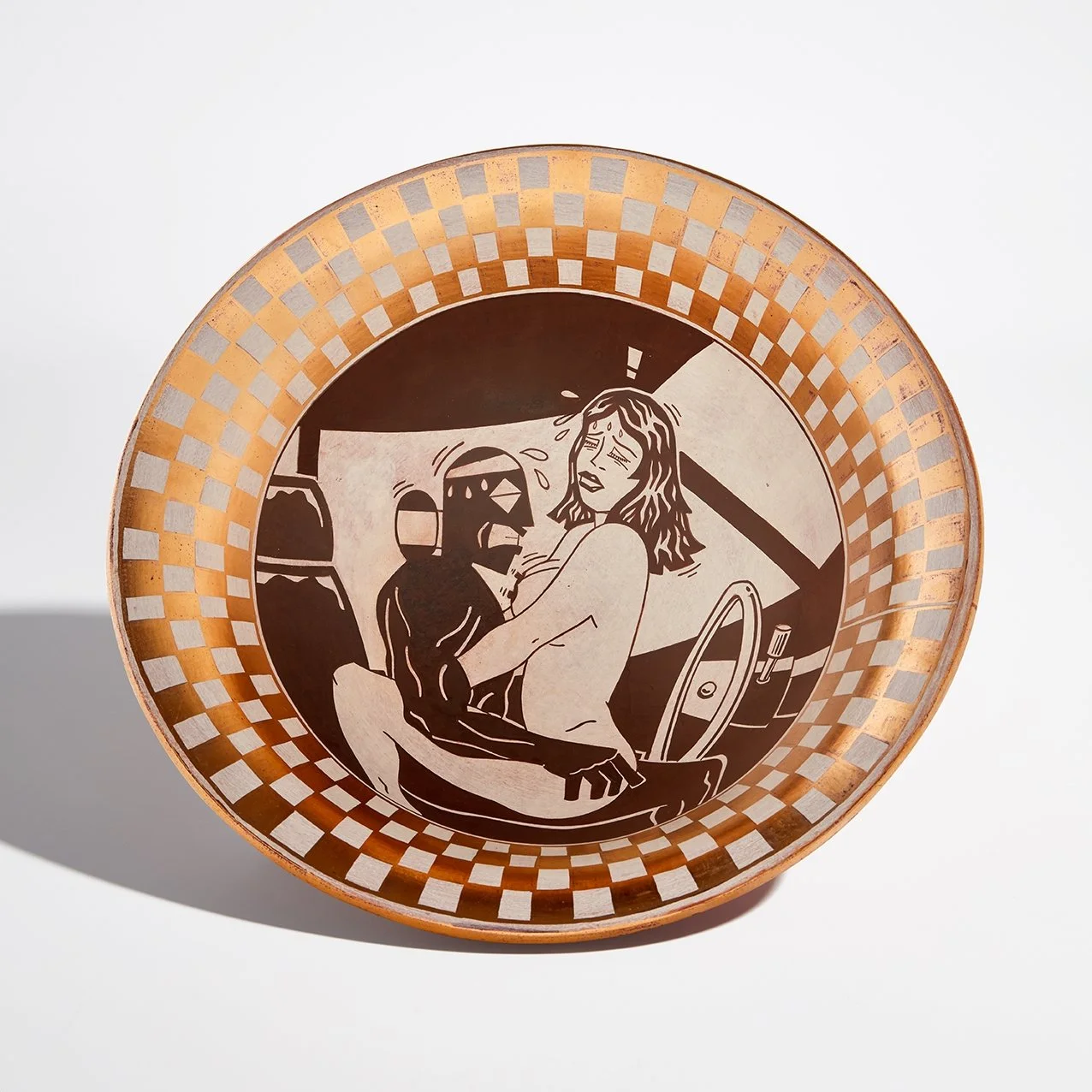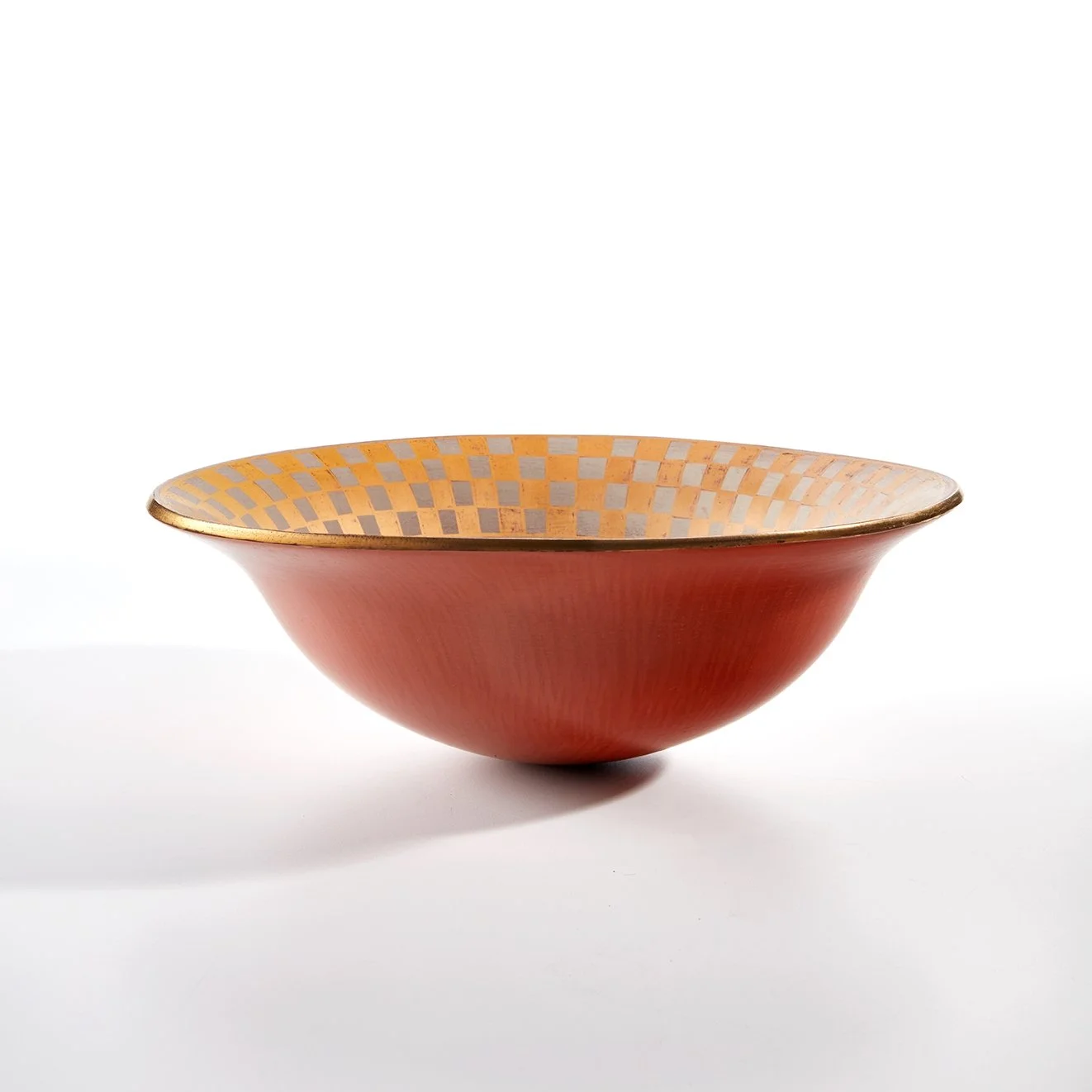DIEGO ROMERO
Der Esel Wagon
Date: 2007
Dimensions: 5.25” x 13.8”
Medium: Earthenware
Condition: Overall very good
Provenance:
– Artist
– Private Collection
– Trotta-Bono Contemporary, Los Angeles, CA
Diego Romero’s ceramic pot masterfully intertwines traditional Mimbres and Puebloan geometric motifs with contemporary comic and pop art influences. The checkered white and gold rim delicately contrasts with the central, comic-style depiction of Choco – a recurring Puebloan alter ego – and a white woman in a moment of passionate intimacy inside a car. Sweating and marked with exclamation points, their intertwined figures express raw sexuality, tension, and humor. Through this bold fusion, Romero challenges conventional perceptions of Indigenous art and identity, using humor and explicit storytelling to explore themes of cultural encounter, desire, and the complexities of human relationships.


